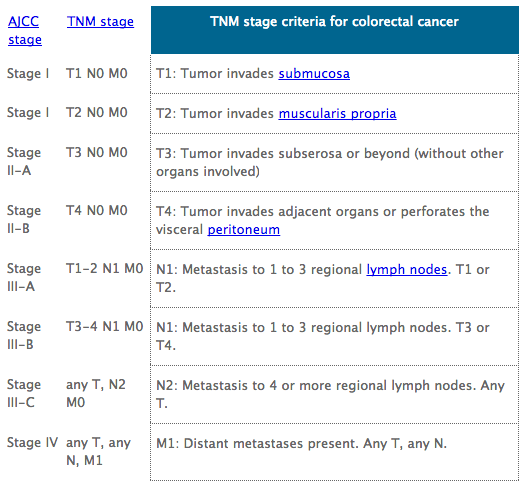What is staging?
Staging is a way to measure the spread of a cancer. The later the stage, the greater the risk of recurrence of the cancer. This gives your doctor a way to predict your risks and to advise if further treatment is required.
Most treatment is based on the TNM system. T is for tumour, and it is giving a number of 1 to 4 depending on the depth of invasion of the tumour at the wall of the colon or rectum. N is nodal status and is given based on the number of affected lymph nodes around the region. N0 is given when none of the surrounding lymph nodes are affected. The greater the number of affected nodes, the larger the N number (0,1 or 2). M stands for metastasis. This means that the cancer has spread to distant organs. M0 means no metastatis and M1 means it has spread. M1 almost always equates to a stage 4 cancer. Various combinations of the T, N and M stage will give the actual stage of the disease.

Cancer staging is accurate only after removal of the cancer. It is not possible to tell the stage of a cancer at the time of colonoscopy. This is because colonoscopy only allows your doctor to see the inside of your colon and will not be able to see the lymph nodes nor other organs such as the liver or lung. CT scans will be able to tell if there is or is not metastasis (the M stage). It is not sensitive enough to tell the status of the lymph nodes. Hence, if there is no spread to the liver or lung in the scan, the only conclusion that can be drawn is that it is not a stage 4 cancer.


